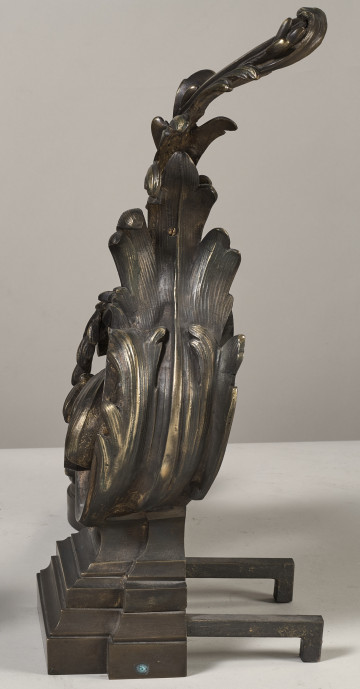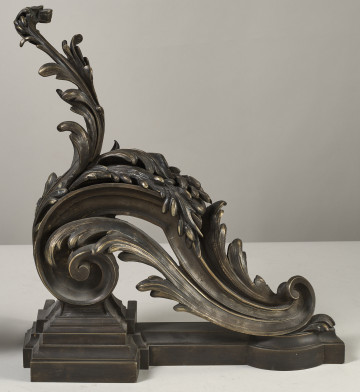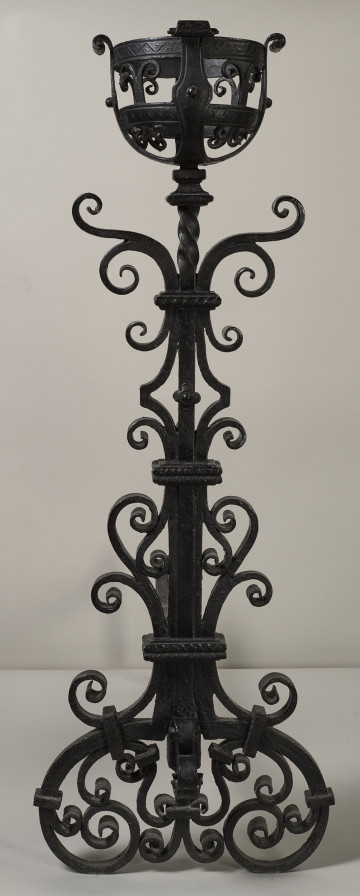
Fireplace wolf
19th / 20th century
Castle Museum in Łańcut
Part of the collection: Metals
Andiron/ fire dog (one of a pair) – S.2013MŁ The history of the andiron begins in the middle ages. They were originally long, wrought iron rods with a hook, to hang a cauldron above the fire. In the 14th century this rod was expanded to include a stem running into the fireplace to hold the pieces of wood, and in the 16th century the practical function (holding of logs) was amended by a decorative function. The name, in Polish – wolf – stems from English (fire dog) and French. The most commonly used material for such holders was wrought iron, even though silver and later bronze, frequently gilded, emerged at the end of the 17th century. The andiron form changed along with fashions and styles, from very simple to very decorative ones. The fire dog from the Potoccy collection, from the second half of the 19th century, is most likely English made, in gilded bronze. The andiron is made up of a steel hearth and a decorative part. The hearth is a four-sided batten, bent at a right angle and resting on four feet, at the bend point decorated by an upright rod with a ball. The decorative part, in classic revival style, is shaped as a four-sided figure with shorter sides rounded, supported on two decorative, carved feet, from the underside decorated with radially arranged leaves, ending with a foot shaped as a ball. Behind, there is a third, straight foot, stabilising the structure. In the axis of the feet there are two flaming vases. The shorter sides are decorated with overlaid floral rosettae. The longer sides of the figure are decorated with ivy and blossoms – rosettae. Presently, the andirons adorn the Grand Dining Room in the first floor of the castle.
Author / creator
Dimensions
height: 31 cm, width: 48 cm
Object type
Metals
Technique
forging
Material
bronze, iron
Creation time / dating
Creation / finding place
Owner
Castle Museum in Łańcut
Identification number
Location / status

19th / 20th century
Castle Museum in Łańcut

19th / 20th century
Castle Museum in Łańcut

19th (?) century
Castle Museum in Łańcut
DISCOVER this TOPIC
National Museum in Szczecin
DISCOVER this PATH
Educational path